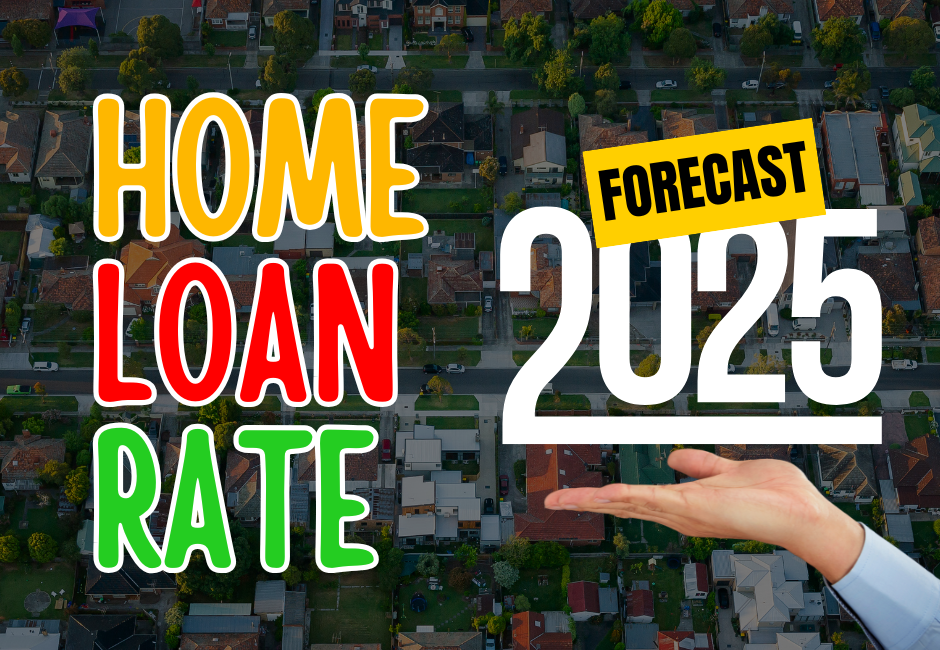
Home Loan Rate Predictions for 2025: What to Expect & How to Prepare
Home Loan Rate Predictions for 2025: What Data Trends Reveal
Why Forecasting Home Loan Rates Is Important
For homeowners, property investors, and first-time buyers alike, predicting home loan rates is far more than an academic exercise—it can mean the difference between securing an affordable mortgage or paying tens of thousands more over the life of a loan. With interest rates having surged over the past few years, many borrowers are eager to know whether 2025 will bring relief or whether they should prepare for continued high repayments.
Understanding the factors that influence interest rates can help borrowers make smarter decisions, whether that means locking in a fixed rate, refinancing at the right time, or adjusting their investment strategy. While no forecast is perfect, analysing economic data trends, market indicators, and expert commentary can help paint a clearer picture of where home loan rates may be headed in 2025.
Key Economic Indicators Affecting Future Rates
Several key economic factors will shape whether home loan rates rise, fall, or hold steady next year. Tracking these indicators helps borrowers anticipate market shifts and plan accordingly.
1. Inflation and the Cost of Living
Inflation is one of the most important drivers of interest rate policy. If inflation remains high, central banks typically keep rates elevated to cool the economy. If inflation eases, interest rates may follow.
In recent years, inflation has been declining from its post-pandemic peaks, though cost-of-living pressures persist. Many economists expect inflation to ease further in 2025, potentially paving the way for rate stabilisation or modest cuts. However, persistent inflation—driven by factors such as energy prices, wage growth, or supply chain disruptions—could keep rates higher for longer.
2. Central Bank Decisions and Cash Rate Movements
The Reserve Bank of Australia (RBA), along with central banks globally, sets benchmark rates that directly influence home loan costs. If central banks determine that inflation is under control, they may cut rates to stimulate growth. If they remain cautious, rates could stay elevated.
Throughout 2023 and 2024, many central banks adopted a “wait and see” stance, keeping rates higher for longer. Heading into 2025, the spotlight will be on whether they begin a rate-cutting cycle. While some economists forecast modest rate cuts in late 2025, others suggest central banks may hold steady to avoid reigniting inflation.
3. Economic Growth and Employment Trends
Economic performance plays a significant role in interest rate settings. If growth slows or a recession looms, rate cuts become more likely. On the other hand, if the economy remains robust and unemployment stays low, policymakers may hold rates steady or even raise them to prevent overheating.
The labour market is especially critical. Rising unemployment may push central banks to lower rates, while strong wage growth without corresponding productivity gains could keep inflation—and rates—stubbornly high.
4. Global Market Conditions and Financial Stability
Global developments also affect domestic rates. A slowing US economy, market volatility, or geopolitical tensions can influence whether central banks ease or tighten monetary policy. For example, if the US Federal Reserve cuts rates to address a slowdown, it could put downward pressure on Australian rates.
Historical Trends and What They Tell Us
History offers valuable context for predicting where rates may head.
- 2008–2013 (Post-GFC Era): Rates plummeted as central banks sought to stabilise economies after the global financial crisis.
- 2014–2019 (Gradual Normalisation): Rates gradually rose as economies recovered, rewarding those who locked in ultra-low GFC-era loans.
- 2020–2021 (Pandemic Stimulus): Rates were slashed to near zero, fuelling a property boom and pushing mortgage rates below 2%.
- 2022–2023 (Inflation Response): Central banks hiked rates sharply to tame runaway inflation, doubling or tripling repayments for many borrowers.
If historical patterns hold, the next phase may involve a period of stabilisation, followed by cautious rate cuts as inflation cools.
RBA Cash Rate Trends (2019–2025 Projection)
The RBA’s cash rate trajectory offers clues:
- 2019–2021: Record lows driven by pandemic stimulus
- 2022–2023: Aggressive hikes to combat inflation
- 2024–2025: Potential plateau or gradual decline, depending on inflation and economic data
This suggests borrowers may begin to see relief from elevated mortgage rates by late 2025 if inflation remains in check.
Expert Insights on 2025 Rate Movements
While expert forecasts differ, three broad scenarios dominate current discussions.
1. Gradual Rate Cuts (Most Likely Scenario)
Many economists anticipate that central banks will cautiously reduce rates in late 2025 as inflation moderates and economic growth slows. However, few expect a return to the ultra-low pandemic-era rates, as policymakers remain wary of stoking another inflation surge.
2. Rates Hold Steady (Alternative Scenario)
Some analysts predict that central banks will keep rates elevated through 2025 to ensure inflation is firmly under control. In this scenario, home loan rates would remain near 2024 levels, providing little immediate relief to borrowers.
3. Unexpected Rate Hikes (Low Probability but Possible)
A global shock—such as a surge in energy prices, geopolitical instability, or new supply chain disruptions—could force central banks to resume rate hikes. This would present the most challenging scenario for borrowers already stretched by high repayments.
How Borrowers Can Prepare for Rate Changes
While no one can predict exact outcomes, there are practical steps borrowers can take to protect themselves.
- Review mortgage terms: Consider whether fixing your rate provides needed stability or if staying variable allows you to benefit from potential rate cuts.
- Build a financial buffer: Strengthen your emergency fund to absorb possible repayment increases or unexpected expenses.
- Explore refinancing options: Monitor rates and be ready to refinance if more competitive deals emerge.
- Stay informed: Track economic data, central bank commentary, and market forecasts to make timely, well-informed decisions.
Final Thoughts
While 2025 may offer borrowers some breathing room, preparation is essential. By understanding the key drivers of home loan rates and staying engaged with market developments, borrowers can navigate potential changes with greater confidence and reduce long-term mortgage costs.




